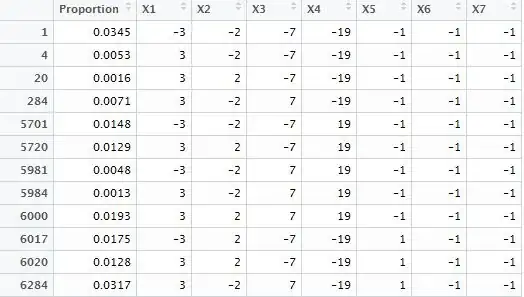I want to construct a design to use Choice Based Conjoint Analysis. I want to focus on D-Optimality, for that reason I use the R package AlgDesign which uses Fedorov Algorithm. I create 7 attributes with 4,5,15,20,2,3,3 levels each one respectively.
library("AlgDesign")
levels.design = c(4,5,15,20,2,3,3)
f.design <- gen.factorial(levels.design)
fract.design <- optFederov(
data=f.design,criterion = "D",
approximate=TRUE)
design1 <- as.data.frame(fract.design$design)
In the picture you can see the first 13 out of 91 profiles. However, I do not understand why for X4 it only takes -19 or +19, when in fact there are 20 levels. The same applies to the other variables.
Question 1: So I do not understand how you can exploit the variance between profiles and thus the trade-offs when using CBC if it only varies between 2 levels.
Question 2: Also, I don't understand what Proportion column means and haven't found anything clear enough on the documentation.
I would really appreciate if someone could give me some insights on what is going on.
UPDATE
By reading some papers I think that extremes values are taken in order to maximize information. However I'd appreciate some more details on this as I do not totally grasp the concept. Especially when the available options are fewer, e.g. 3 attributes with 3 levels, the algorithm also takes the intermediate level. Why?
